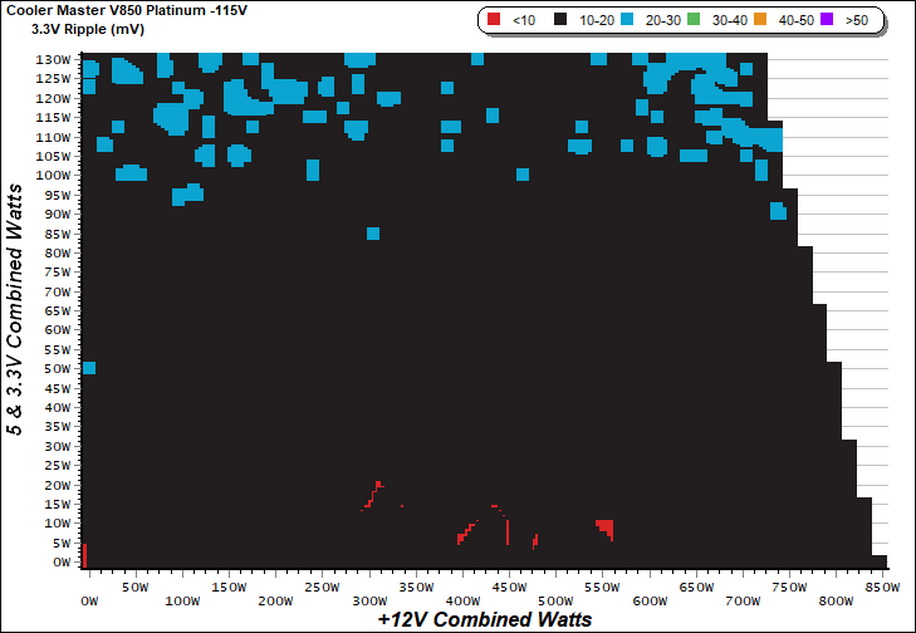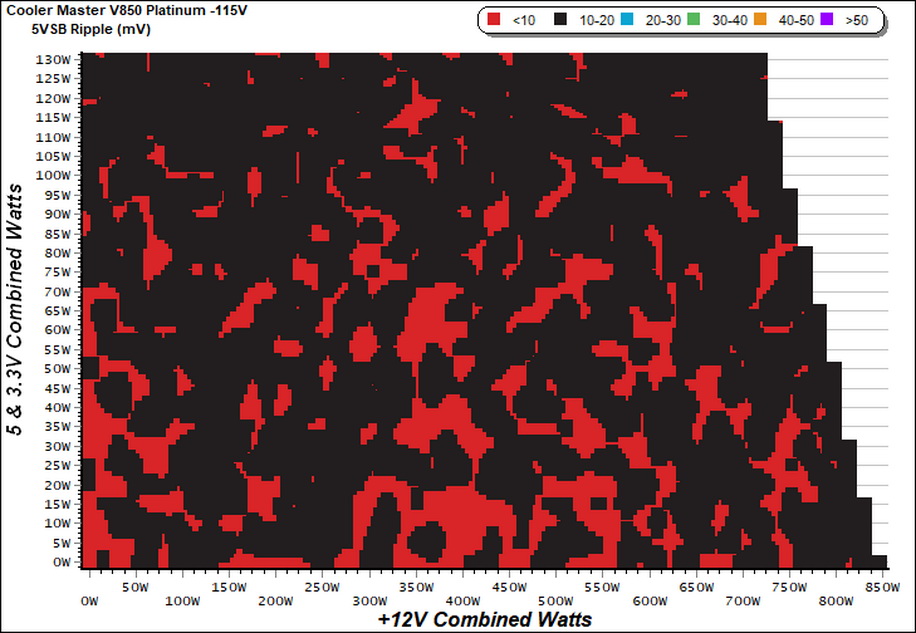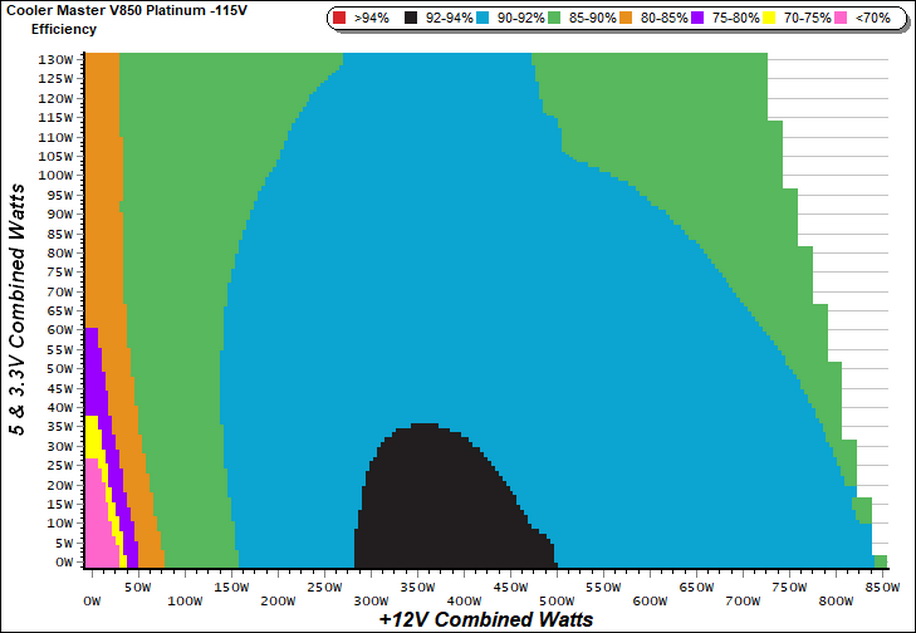Cooler Master V850 Platinum Power Supply Review
Why you can trust Tom's Hardware
Protection Features, DC Power Sequencing, Cross-Load Tests and Infrared Images
Protection Features
Check out our PSUs 101 article to learn more about PSU protection features.
| Protection Features | |
| OCP | 12V1: >40.9A (>116.19%), <12.18V 12V2: >40.9A (>116.19%), <12.18V 5V: 34.8A (139.2%), 4.954V 3.3V: 34.1A (136.4%), 3.311V 5VSB: 6.7A (223.33%), 4.845V |
| OPP | 1347.18W (158.49%) |
| OTP | ✓ (155.8°C @ 12V Heat Sink) |
| SCP | 12V: ✓ 5V: ✓ 3.3V: ✓ 5VSB: ✓ -12V: ✓ |
| PWR_OK | Non Accurate |
| NLO | ✓ |
| SIP | Surge: MOV Inrush: NTC Thermistor & Bypass Relay |
The Over Current Protection (OCP) thresholds on the +12V rails exceed the capabilities of the Fast Auto electronic load that we use in these tests. We will acquire an additional Fast Auto though, to deal with stronger PSUs.
The minor rails have higher than the required, OCP triggering points but this doesn't seem to create any problems. Lastly, the 5VSB circuit is robust since it can deliver 6.7A before its protection kicks in.
The Over Power Protection (OPP) should be lower to protect the unit adequately. The ideal OPP triggering point is close to 130% of the unit's max-rated-capacity. Finally, the power ok signal is inaccurate, and this is a great shame for a high-end PSU.
DC Power Sequencing
According to Intel’s most recent Power Supply Design Guide (revision 1.4), the +12V and 5V outputs must be equal to or greater than the 3.3V rail at all times. Unfortunately, Intel doesn't mention why it is so important to always keep the 3.3V rail's voltage lower than the levels of the other two outputs.



The 3.3V rail is always lower than the other two rails.
Cross Load Tests
To generate the following charts, we set our loaders to auto mode through custom-made software before trying more than 25,000 possible load combinations with the +12V, 5V, and 3.3V rails. The deviations in each of the charts below are calculated by taking the nominal values of the rails (12V, 5V, and 3.3V) as point zero. The ambient temperature during testing was between 30 to 32 degrees Celsius (86 to 89.6 degrees Fahrenheit).
Get Tom's Hardware's best news and in-depth reviews, straight to your inbox.
Load Regulation Charts



Efficiency Chart
The region, where efficiency exceeds 92%, is pretty small. For the majority of its operational range, the V850 delivers 90-92% efficiency.
Ripple Charts
The lower the power supply's ripple, the more stable the system will be and less stress will be also applied to its components.




Infrared Images
We apply a half-load for 10 minutes with the PSU's top cover and cooling fan removed before taking photos with a modified FLIR E4 camera able to deliver an IR resolution of 320x240 (76,800 pixels).






The temperatures of the PSU's internals are at normal levels, given the conditions.
MORE: Best Power Supplies
MORE: How We Test Power Supplies
MORE: All Power Supply Content
Current page: Protection Features, DC Power Sequencing, Cross-Load Tests and Infrared Images
Prev Page Load Regulation, Hold-Up Time, Inrush Current, Efficiency and Noise Next Page Transient Response Tests, Ripple Measurements and EMC Pre-Compliance Testing
Aris Mpitziopoulos is a contributing editor at Tom's Hardware, covering PSUs.
